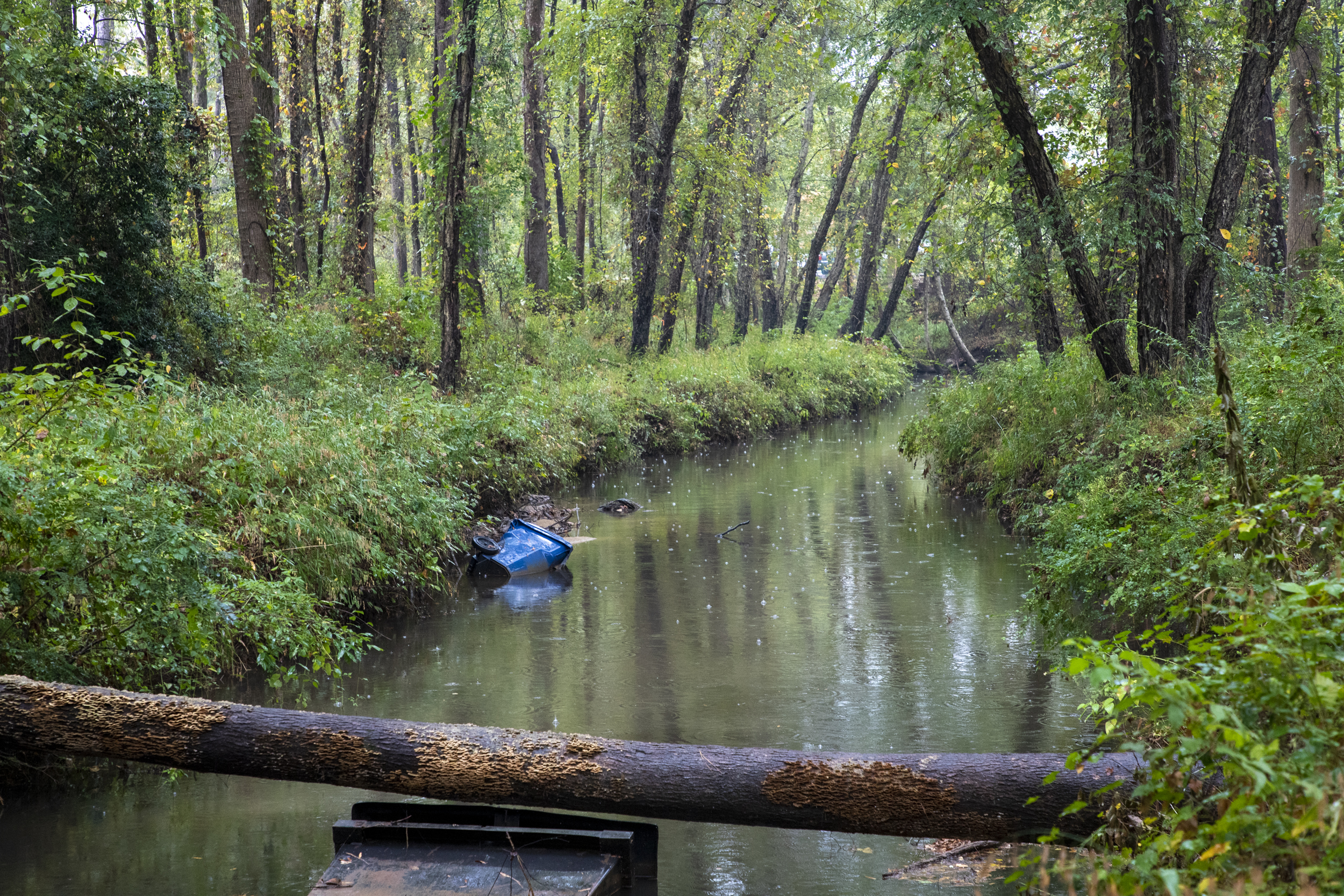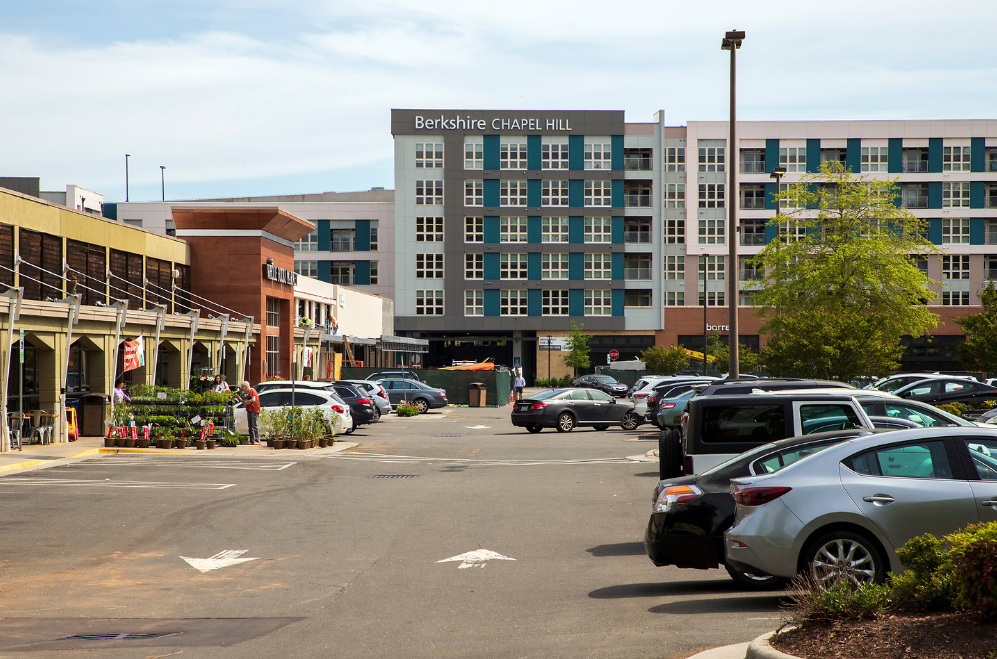The Chapel Hill Town Council took an important step to help protect local watersheds after unanimously adopting a study on Lower Booker Creek last Wednesday.
Mayor Pam Hemminger said it was the job of local governments to manage and maintain their watersheds.
“We currently have citizens and homes and roads and businesses flooding out,” Hemminger said. “I see this as a real take-some-action, get-some-things-done to help that situation.
“But it also improves the water quality that we’re responsible and charged with improving.”
The study was commissioned by the council in 2014 and was completed by W.K. Dickson, a consulting firm based in Raleigh. It examined what happened in Lower Booker Creek during rainfall, identifying problems and coming up with a prioritized list of solutions. Town engineer Chris Roberts said the amount of impervious surfaces such as pavement and concrete can have an impact on nearby watersheds.
“Lower Booker Creek actually has the highest amount of existing impervious today of the five subwatersheds,” Roberts told the council. “And that’s really related to the commercial corridor along Fordham. The other subwatersheds are more residential.”
W.K. Dickson created a list of projects that would help solve these problems. These projects range in cost from $200,000 to upwards of $4 million. The total cost of these projects will be nearly $30 million, but Roberts said there was no way to calculate what the exact cost will be right now.
“When you get ready to move forward with a project,” Roberts said, “obviously, the final cost is going to depend on the market conditions at that time.”
While all councilmembers expressed support for adopting the study and beginning to plan for some of these future projects, some on the council expressed concern. The original proposal included the study and recommendations as part of the 2020 Comprehensive Plan. This was done to make a strong statement to show how serious the town is about fixing these issues and to give the study more authority. However, councilman George Cianciolo said he was not in favor of this idea.
“To incorporate what we don’t yet know into the comprehensive plan, once again, can be misleading to the public,” Cianciolo said. “In looking at some of this, there’s a potential that we’re going to need land acquisition. We don’t know the cost of that land acquisition.
“Until you begin your actual design, you don’t know what the actual construction costs are. I know we have estimates here, but we don’t know what those are.”
The final version of the study was adopted, but not as a part of the comprehensive plan.
Related Stories
‹

On the Porch: Commissioner John Foley: Pittsboro UpdatesThis Week: Travel was John Foley's first passion so a career in the airline industry was natural. The smiles on the faces of the people he met while circling the globe shaped the person he is today. After studying medicine and graduating from North Carolina State University with a Bachelor of Science degree, Foley began a 20-year career as a kidney dialysis technician. He even donated a kidney to a patient he was treating in Durham NC. In his latest chapter, Foley is a realtor and and town commissioner leading Pittsboro NC forward during a time of remarkable change.

'It Has Been Devastating': Chapel Hill Leaders on Recovering From ChantalAfter the devastation of Tropical Depression Chantal, local leaders weigh in on how we can help each other now - and plan for the future.

Chapel Hill Mayor: Harnessing Local Passion Part of Town's 2025 PlansChapel Hill Mayor Jess Anderson says plenty comes to mind for town government goals and what her aspirations are for this new calendar year.

Concerns Over Booker Creek Stormwater Plan Cause Chapel Hill to Change CourseThe Town of Chapel Hill hosted a community information meeting about the Booker Creek Watershed last week. The town put its original stormwater mitigation plan on pause to address public concerns.
![]()
Chapel Hill: Home Football Games, 9/11 Events and Bus DriversChapel Hill Mayor Pam Hemminger joins 97.9 The Hill's Brighton McConnell on the air Thursday, September 9. She details several upcoming events around town, including 9/11 remembrance events, UNC football's home opener, meetings about stormwater management and more!
![]()
Chapel Hill: Gov. Cooper Visits and Residents Discuss StormwaterChapel Hill Mayor Pam Hemminger drops by the 97.9 The Hill studio to speak with Brighton McConnell on Thursday, August 26. She details a visit from Gov. Roy Cooper at a local business, as well as how the business community is working around the shifting public health landscape. Plus: what people can expect when visiting Chapel Hill for UNC games this fall and what the town is planning to do to discuss stormwater flow.

Chapel Hill's Booker Creek Storage Basin Breaks GroundChapel Hill Mayor Pam Hemminger joked that the ceremony held Thursday for the town’s Booker Creek Storage Basin project was a little different than normal. “It was my first ever virtual groundbreaking,” she said to 97.9 The Hill’s Aaron Keck. “They delivered a trowel to my front door [for it.]” But as Hemminger said the space […]

Chapel Hill Looks to Maintain Stormwater Rules in Blue Hill DistrictTown officials have a problem. Thanks to recent state legislation, the town of Chapel Hill has less ability to enforce stormwater requirements in some development projects. In most of Chapel Hill, this is not an issue. Mayor Pam Hemminger said the existing town ordinance gives officials the ability to manage stormwater in other parts of […]
![]()
Parts of Booker Creek Road ClosedBooker Creek Road will be closed to through traffic until Early October between Lakeshore Lane and Foxwood Drive near the Booker Creek Townhouse Apartments. The closure is due to a storm water drain pipe replacement. The road is projected to reopen in October, weather permitting. A detour map can be found here.
![]()
141 Residents From Three Complexes Affected By FloodingNearly 150 residences in three apartment and condominium complexes were damaged or destroyed by Sunday and Monday’s flood waters, according to the Town of Chapel Hill.
›






